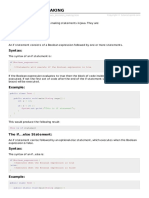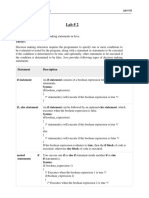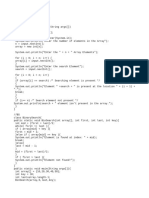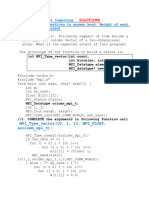0% found this document useful (0 votes)
10 views90 pagesJava 2
The document covers programming concepts related to branching, looping, and data structures in Java. It includes syntax and examples for various control flow statements like if, if-else, switch-case, for, while, and do-while loops, as well as data structures such as arrays, ArrayLists, and Vectors. Additionally, it explains the differences between Strings and StringBuffers, and provides examples of operations on arrays.
Uploaded by
Rishit JainCopyright
© © All Rights Reserved
We take content rights seriously. If you suspect this is your content, claim it here.
Available Formats
Download as PPTX, PDF, TXT or read online on Scribd
0% found this document useful (0 votes)
10 views90 pagesJava 2
The document covers programming concepts related to branching, looping, and data structures in Java. It includes syntax and examples for various control flow statements like if, if-else, switch-case, for, while, and do-while loops, as well as data structures such as arrays, ArrayLists, and Vectors. Additionally, it explains the differences between Strings and StringBuffers, and provides examples of operations on arrays.
Uploaded by
Rishit JainCopyright
© © All Rights Reserved
We take content rights seriously. If you suspect this is your content, claim it here.
Available Formats
Download as PPTX, PDF, TXT or read online on Scribd
/ 90






















































































